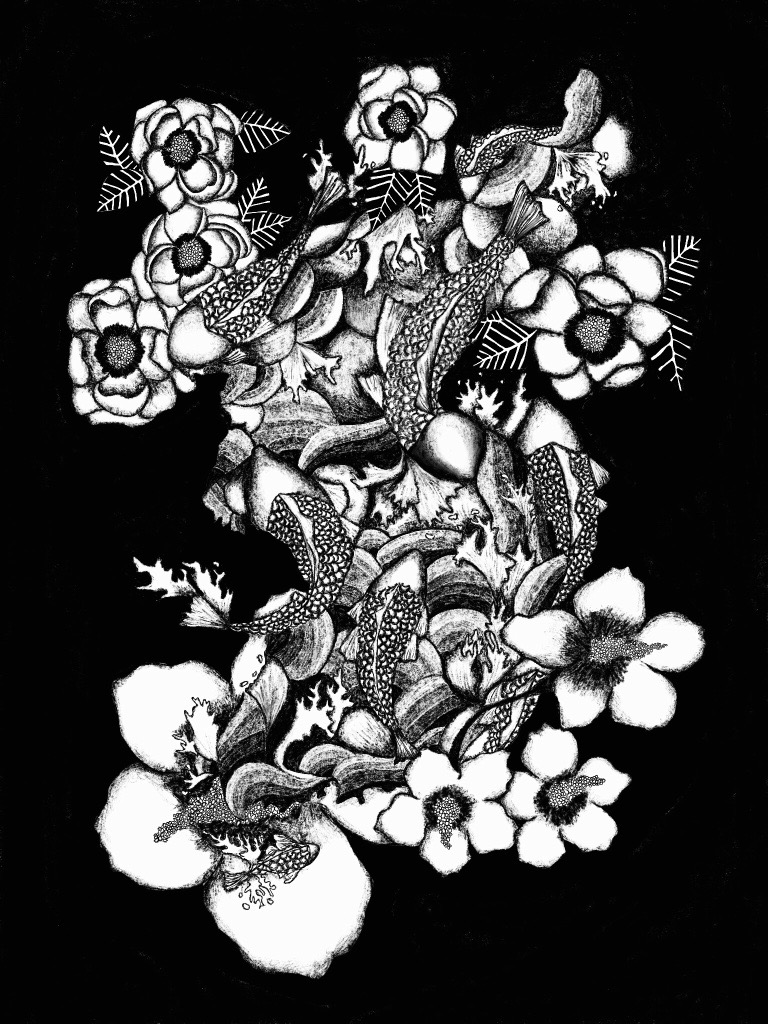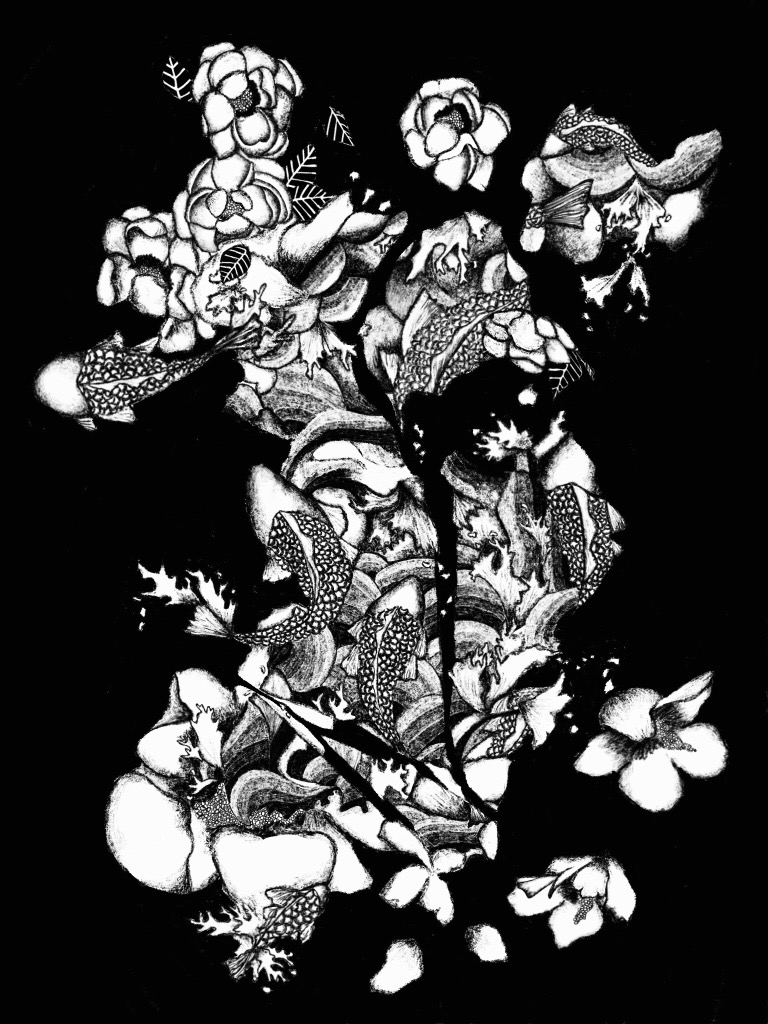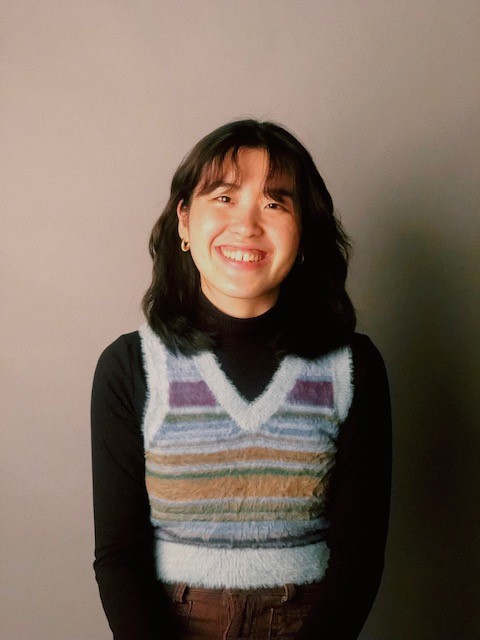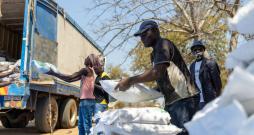Belonging in peace
A young adult reflects on her family and the Korean divide

July 27, 2023, marks the 70th anniversary of the Korean Armistice Agreement. While the agreement ended three years of armed conflict, the war continues to this day. Families remain divided by a sealed border between the North and South. Those who can remember a united Korea are dying off. Yujin Kim, a young adult living in Lancaster, Pennsylvania, reflects on how separation and longing are part of her family narrative, shaping her identity and motivating her to work for peace.
Prolonging.
It’s been 70 years.
Seventy years since the prolonged war between two Koreas. And more than 70 years since my grandparents fled their homes.
In August 1945, Korea was liberated from 35 years of colonization under Imperial Japan. The removal of Japanese forces was overseen by the United States and the Soviet Union, which resulted in the formation of the 38th parallel line, splitting the Korean Peninsula in half — into North (Democratic People’s Republic of Korea, or North Korea) and South (Republic of Korea, or South Korea).
The divided occupation brought confusion and instability as the two Koreas rapidly developed two contrasting political regimes.
Long ago, even before Japanese colonial rule (1910–1945), the northern part of the Korean Peninsula was the center of Christianity in Northeast Asia. In 1907, the Great Pyongyang Revival, a Protestant renewal movement, took place in the city of Pyongyang, which is today the capital of North Korea. The city was known among missionaries as the “Jerusalem of the East.”
However, when the Soviet Union took over the North, many Christians fled to the South despite the risks of crossing the border, including my grandparents’ families. Many people also relocated to the North from the South when the U.S. took over that area.
My grandmother and grandfather crossed the 38th parallel as pre-teens in 1948. They lived their adolescence and young adult lives as refugees. The Korean War broke out soon after they were uprooted from the North.
The war broke out on June 25, 1950, after the 38th parallel had become the frontline for tensions between the U.S. and the Soviet Union.
An Armistice Agreement was signed on July 27, 1953, but the war continues to this day — a vicious cycle of hostility and violence. And a prolonged absence of peace.

Belonging.
고향 (Go-hyang) means both hometown and origin. It could be one’s place of birth or a place where one’s parents and ancestors resided. Go-hyang has a strong tie with one’s identity and sense of belonging.
However, this tie to identity and belonging can be distorted. When my grandparents came to the South as 10- and 11-year-olds, they started a new life with a new identity. The Korean War embedded strong anti-communist sentiments in South Korean society, and it was normal to express hostility toward people associated with the North.
For refugees from the North, expressing these hostile sentiments meant gaining trust and acceptance from southerners. Eventually, my grandparents had to leave their go-hyang behind both physically and mentally.
When we think of North and South Korea, the first words or images that pop into our minds are probably war, military, nuclear weapons and endless missile launches. I think about these things, too.
But my thoughts continue beyond those images. I think about my grandparents. I think about men who are affected by conscription (because, in South Korea, all men between the ages of 18 and 35 must serve at least 18 months of military service — one of the long-term consequences of the Korean War). I think about the language shared between northerners and southerners, the food we all love, and the roots and long history we are part of.
I am an individual with dual citizenship in the U.S. and South Korea, and family roots in North Korea. And as part of the Mennonite community, I often wrestle with my identity. I ask myself: How do I relate to these countries that have existed in multifaceted layers of conflict for more than 70 years? How can I talk about peace with my grandparents when the trauma of war and negative sentiments toward the North still exist? Where do I belong?
Peacemaking and reconciliation – the center of Anabaptist faith and work – are complex. I experience this complexity on multiple levels within my family, friends, and church community, and with the countries that tie in with my identity and sense of belonging.
The journey toward peace on the Korean Peninsula has been complex and unsteady. However, I continue to hope for a go-hyang where war and violence are not the first things that pop into my mind — a place where I can belong in peace.

Longing.
In the winter of 2021, I visited my family who lives in Chuncheon, South Korea. We were on a family trip and decided to stop by a village called No Gun Ri.
Back in spring 2000, my family had left South Korea and moved to Newberg, Oregon, the town where I was born, so my father could pursue his theological studies at George Fox Evangelical Seminary. One day, at the school’s computer lab, one of my father's seminary friends suddenly approached him and apologized for what she had just read in a newspaper article.
The article reported on a massacre committed by U.S. troops decades earlier during the Korean War. My father discovered that this tragic incident had happened at a twin tunnel bridge in No Gun Ri, a location very familiar to him. The bridge was less than ten minutes from where he had completed his compulsory military service (1991–1993). He would often walk past the bridge as a young soldier.
He immediately recognized the bridge in the newspaper photo and vividly remembered the countless bullet holes on the walls of the bridge. When he was a soldier, he thought the holes were simply traces of the Korean War. But they were actually evidence of a massacre of innocent civilians and refugees. Ironically, the name of the village is "No Gun" Ri.
The apology from his friend came as a surprise because, until that day, my father had been completely unaware of the massacre. The massacre had been kept a secret for more than 50 years due to the U.S. military’s denial of the truth. He was also shocked that his friend would apologize on behalf of the U.S. troops for what had happened.
The apology made my father revisit his difficult time as a soldier with a new perspective; that small interaction became a sign of hope toward reconciliation and peace.
The bridge at No Gun Ri is symbolic. Outwardly, it’s a structure that holds tragic and horrendous traces of war. At the same time, the bridge represents an important connection between my father, generational memories and a hope for peace. That’s why my family visits the bridge whenever we get the chance.
For me, my family, friends and church, the 70th anniversary of the Korean War could also be called the 70th anniversary of longing for peace on the Korean Peninsula.
Many individuals and organizations have long worked for peace in response to the prolonged conflict. This includes MCC’s peace and development projects, and support for a formal end to the Korean War. From 1953–1971, MCC operated the Mennonite Vocational School in South Korea, providing access to education and humanitarian assistance. Since 1995, MCC has also responded to ongoing humanitarian needs in North Korea by providing things like canned meat, relief kits and agricultural supplies.
Because of the pandemic, MCC’s humanitarian work in the North has had to pause. But MCC continues its advocacy efforts, calling for a formal end of the Korean War. MCC also advocates for more people-to-people engagement, including reunification for separated families.
When I visited the bridge at No Gun Ri, I realized it was a paradox. The bridge is a stark reminder of the absence of peace. However, it’s also a bridge that longs for peace. It connects people with grief, while urging them to learn about the truth and reconsider perceptions of war. It compels people to never repeat the cycle of violence.
For me and my family, No Gun Ri reminds us there is truly a bridge to peace, reconciliation and belonging.


